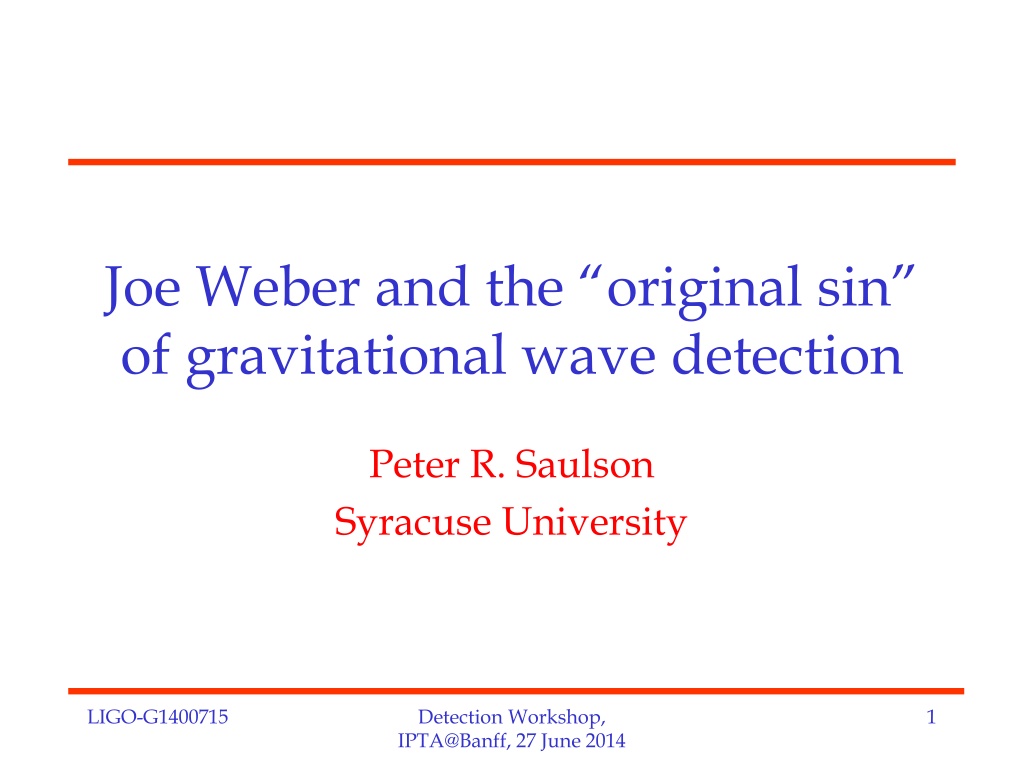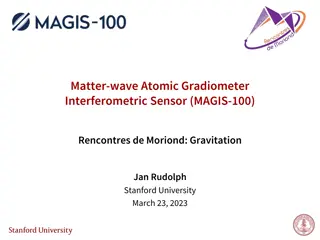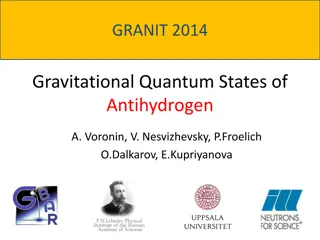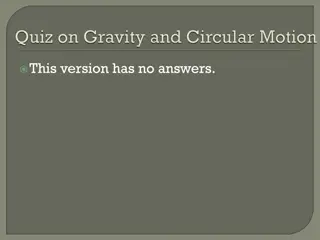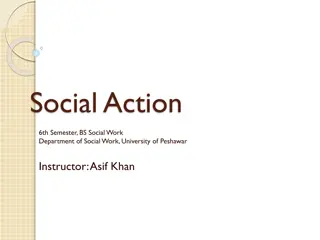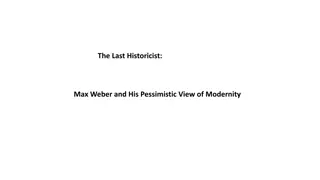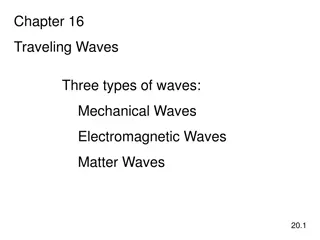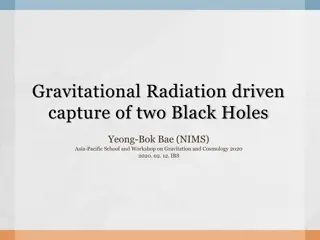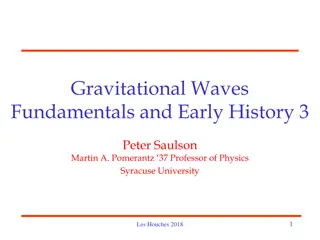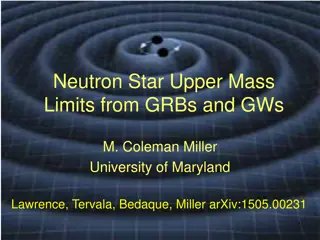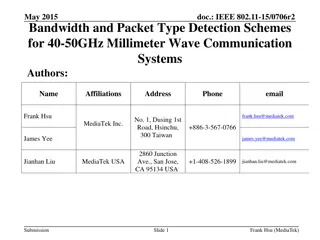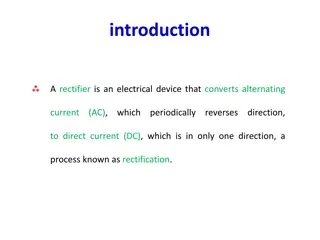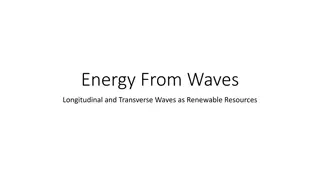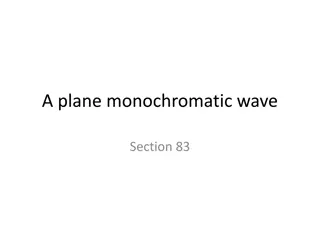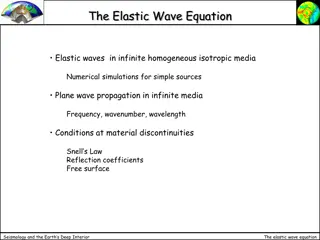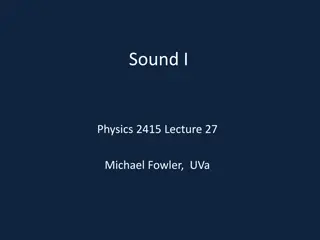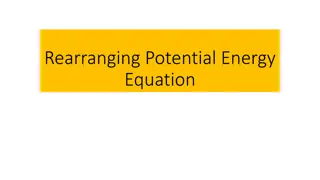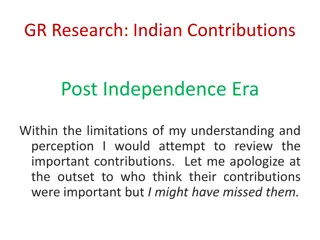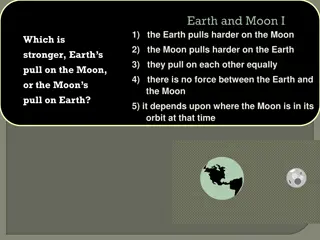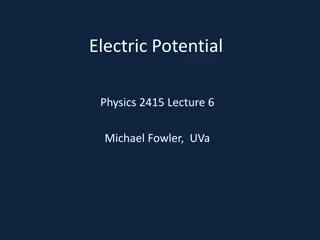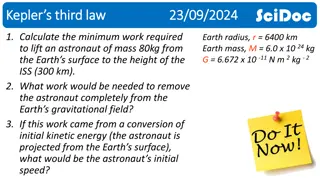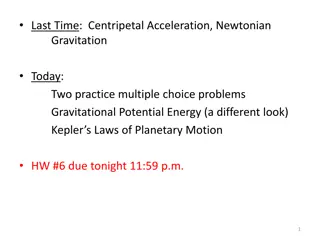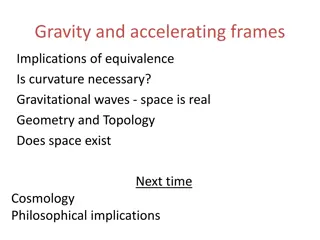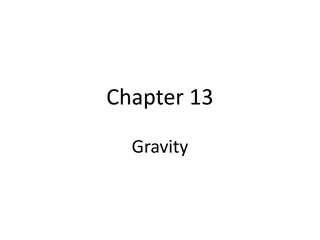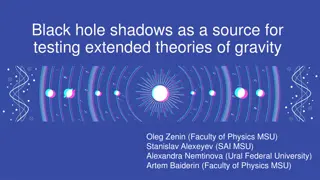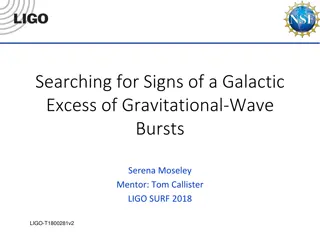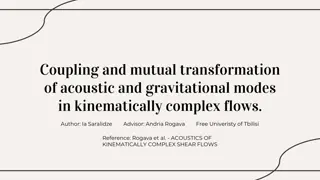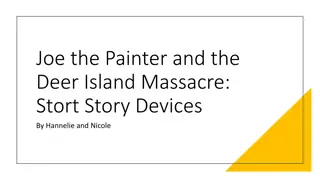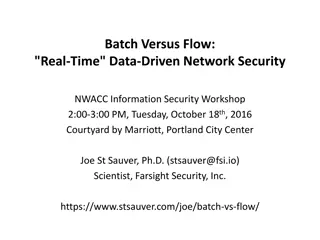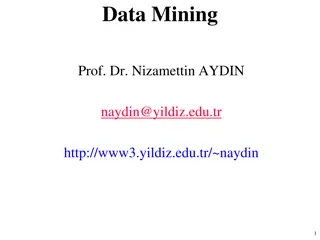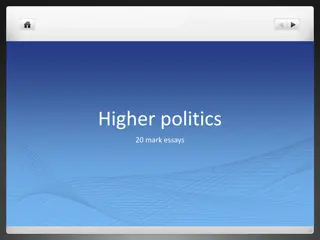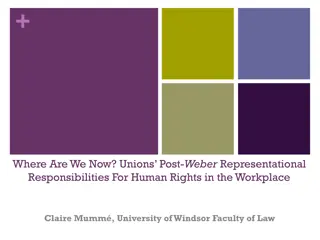The Legacy of Joe Weber in Gravitational Wave Detection
Joe Weber, a key figure in the history of gravitational wave detection, made significant original contributions to the field, despite facing conflicts and challenges. His groundbreaking work laid the foundation for future advancements in the detection of gravitational waves. The story of Joe Weber's pursuit of proving the existence of gravitational waves serves as a valuable lesson for the scientific community.
Uploaded on Sep 28, 2024 | 1 Views
Download Presentation

Please find below an Image/Link to download the presentation.
The content on the website is provided AS IS for your information and personal use only. It may not be sold, licensed, or shared on other websites without obtaining consent from the author. Download presentation by click this link. If you encounter any issues during the download, it is possible that the publisher has removed the file from their server.
E N D
Presentation Transcript
Joe Weber and the original sin of gravitational wave detection Peter R. Saulson Syracuse University LIGO-G1400715 Detection Workshop, IPTA@Banff, 27 June 2014 1
Outline Who was Joe Weber? Weber s myriad original contributions Weber s observations of gravitational waves and how they were supported Others replicate his observations without success How were the conflicts resolved? What lessons can we learn for the future? What is the burden of original sin ? LIGO-G1400715 Detection Workshop, IPTA@Banff, 27 June 2014 2
Joe Weber at Chapel Hill Joe Weber, co-inventor of the maser, was a U Md professor, on sabbatical in 1956 -57 with John Wheeler at Princeton. At the Chapel Hill conference in Jan 1957, they heard the key talk by Pirani that clarified that GW s were real, because they could (in principle) be detected. 3 LIGO-G1400715 Detection Workshop, IPTA@Banff, 27 June 2014
Joe Weber starts GW detection Weber and Wheeler recapped Pirani s argument in a paper written within weeks of the Chapel Hill conference. Weber developed the experimental ideas in two Gravity Research Foundation essays (3rd prize 1958, 1st prize 1959), leading to his 1960 Phys. Rev. paper laying out the bar program. 4 LIGO-G1400715 Detection Workshop, IPTA@Banff, 27 June 2014
Webers bar Weber s detector embodied Pirani s gedankenexperiment. It was a cylinder of aluminum, each end of which is like a test mass, while the center is like a spring. PZT s around the midline absorb energy to send to an electrical amplifier. 5 LIGO-G1400715 Detection Workshop, IPTA@Banff, 27 June 2014
Weber invented us from scratch It was an act of genius (and/or madness) to transform a gendankenexperiment into a working apparatus and an observing program. Along the way, Weber developed: Sensitivity calculation and noise analysis Thermal noise minimization by high Q Seismic isolation Coincidence for background rejection Time slides for background estimation LIGO-G1400715 Detection Workshop, IPTA@Banff, 27 June 2014 6
Weber started seeing things In 1969, Weber made his first of many announcements that he was seeing coincident excitations of two detectors. 7 LIGO-G1400715 Detection Workshop, IPTA@Banff, 27 June 2014
Therefore it is quite certain that all of the coincidences cannot be accidental. LIGO-G1400715 Detection Workshop, IPTA@Banff, 27 June 2014 8
Sidereal correlation points to the Galactic Center LIGO-G1400715 Detection Workshop, IPTA@Banff, 27 June 2014 9
True, or too good to be true? Weber s claims set the world on fire. It seemed that Weber had opened a new window on the universe. Of course, if his observations were correct, the signals would have been shockingly large the Galaxy should be blowing itself up in less than a Hubble time. Many other groups started building resonant bars, including: Glasgow, Rome, Frascati, Munich, Bell Labs, and IBM (among others). LIGO-G1400715 Detection Workshop, IPTA@Banff, 27 June 2014 10
Joining the quest Edoardo Amaldi, Rome Richard Garwin, IBM Tony Tyson, Bell Labs Ron Drever and Jim Hough, Glasgow 11 LIGO-G1400715 Detection Workshop, IPTA@Banff, 27 June 2014
Billing and the bar at Munich 12 LIGO-G1400715 Detection Workshop, IPTA@Banff, 27 June 2014
Sadly/inevitably, it became clear that Weber s signals weren t real Starting in 1972, attempted replications by many groups all failed to see signals like Weber had claimed. Weber had seen rather steady (and large) rates of GW pulses, so even one month of operation without detections was taken to contradict Weber s results. 13 LIGO-G1400715 Detection Workshop, IPTA@Banff, 27 June 2014
Doubts about Weber s own procedures In his early (1970 and earlier) analyses, Weber had found coincidences by eye while scanning paper recordings of instrument output. The possibilities for bias were apparent. At others urging, Weber switched to computerized analysis. But at the CCR5 meeting in 1974, David Douglass (Rochester) announced that he had found a bug that produced numerous false coincidences. Also at CCR5, Douglass revealed that Weber had mistaken the time stamp on Rochester data by 4 hours, but still had found significant coincidences at zero delay. LIGO-G1400715 Detection Workshop, IPTA@Banff, 27 June 2014 14
What went wrong? Numerous technical mechanisms have been proposed for Weber s false coincidences. None have stuck. Weber never carried out a blind analysis. And, he often stated that he believed the main way to judge a search for gravitational waves was whether it produced signals. Weber also made it difficult to learn details of his analysis. LIGO-G1400715 Detection Workshop, IPTA@Banff, 27 June 2014 15
What went right? This is a textbook case of attempted replication of an important but controversial experimental claim. It took only a few years for replications to be carried out and for a consensus to form that Weber must have been wrong. LIGO-G1400715 Detection Workshop, IPTA@Banff, 27 June 2014 16
The afterlife of the Weber affair Weber lived a long and active life, until 2000. He never agreed that his results were wrong. He kept making observations and announcing detections. (He saw SN1987a, e.g.) His continual presence reminded us that our field was born in controversy. Without any formal closure (in particular, any agreement on what had gone wrong), it was hard to leave that episode in the past; in effect, we replayed the Weber affair all the time. LIGO-G1400715 Detection Workshop, IPTA@Banff, 27 June 2014 17
Can we avoid the faults of Weber? There is no second independent global network of interferometers to check a detection claim. (Is there one for pulsar timing?) However, we can ensure that: We carry out carefully documented blind analyses. We make our data available and our procedures transparent to others. LIGO-G1400715 Detection Workshop, IPTA@Banff, 27 June 2014 18
The burden of history? Are Weber s sins our burden to carry and to atone for, or do Weber s sins only burden those with memories as long as mine? That is for our community to judge. LIGO-G1400715 Detection Workshop, IPTA@Banff, 27 June 2014 19
